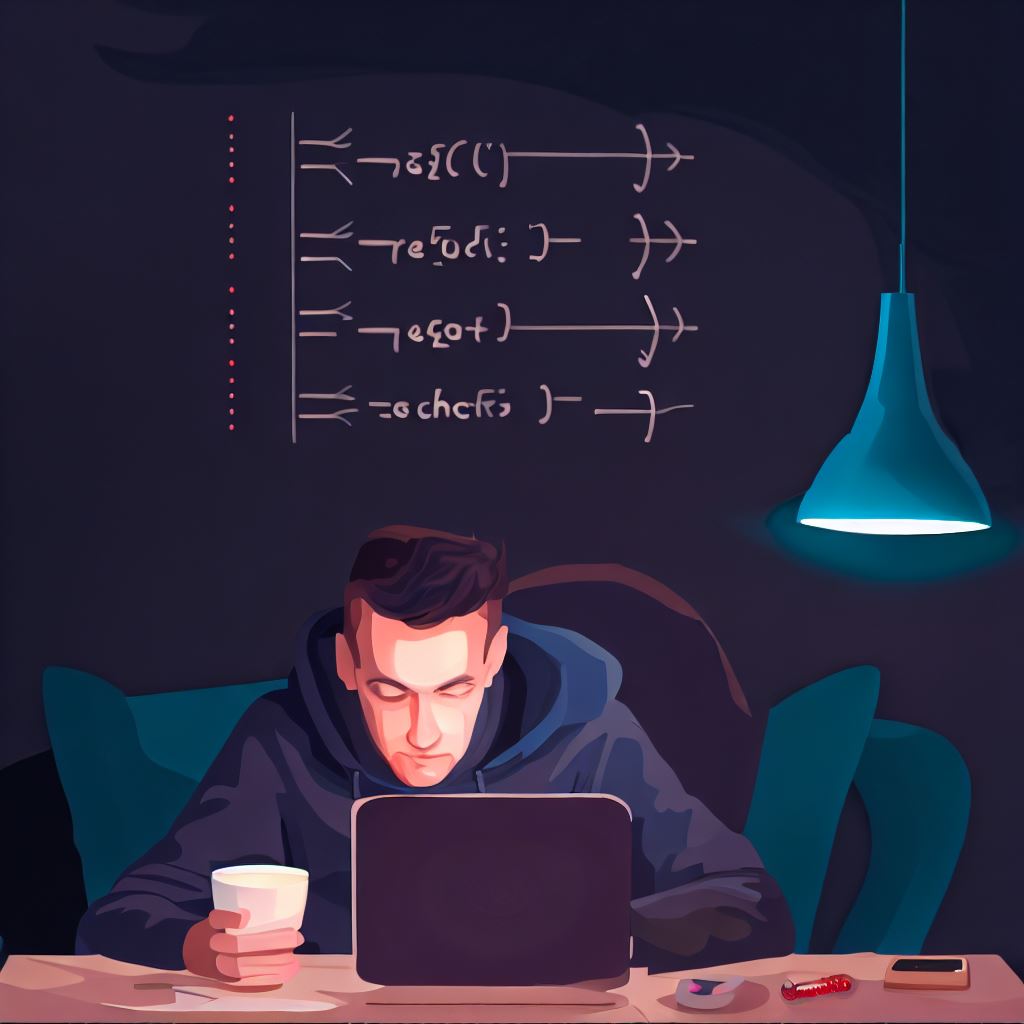Introduction
Recursion is a fundamental concept in programming, and understanding it is key to becoming a proficient coder.
Explanation of recursion in programming
Recursion is a process where a function calls itself repeatedly until a base condition is met.
Importance of mastering recursion
Mastering recursion allows programmers to solve complex problems effectively and efficiently.
Overview of using CodingBat to practice recursion
CodingBat provides a platform that allows programmers to practice recursion through coding exercises.
By solving these exercises, coders gain hands-on experience and improve their recursion skills.
The interactive nature of CodingBat makes it an ideal tool for beginners to grasp recursion easily.
Moreover, CodingBat offers various problem sets designed specifically for recursion, enabling programmers to strengthen their understanding.
CodingBat also provides instant feedback and hints, allowing programmers to learn from their mistakes and improve.
By consistently practicing recursion on CodingBat, programmers can build confidence and mastery in this essential programming technique.
In conclusion, understanding recursion is crucial for any programmer’s growth.
Using platforms like CodingBat to practice recursion can significantly enhance one’s coding skills and problem-solving abilities.
With dedication and consistent practice, mastering recursion becomes attainable, opening doors to solve complex programming challenges.
Understanding the Basics of Recursion
Definition of recursion
Recursion refers to the process in which a function calls itself repeatedly until a condition is met.
It involves breaking down a complex problem into smaller, simpler subproblems.
Recursion can provide an elegant solution to certain programming problems.
Tech Consulting Tailored to Your Coding Journey
Get expert guidance in coding with a personalized consultation. Receive unique, actionable insights delivered in 1-3 business days.
Get StartedHow recursion works
Recursion works by dividing a problem into smaller instances of the same problem.
It starts with a base case, which defines when the recursion should stop.
Each recursive call solves a smaller subproblem until the base case is reached.
The solutions to the subproblems are then combined to solve the original problem.
Recursive functions and base cases
Recursive functions are functions that call themselves within their own code. They often involve a base case, which is a condition that stops the recursion.
The base case provides the terminating condition for the recursive calls. When writing recursive functions, it is important to consider the base case.
The base case ensures that the function does not get stuck in an infinite loop. Without a base case, the function would keep calling itself indefinitely.
The base case serves as the stopping criterion for the recursion. It allows the function to return a result and terminate the recursive calls.
Without a base case, the function would continue calling itself endlessly. In recursion, the base case typically handles the simplest case of the problem.
It is the condition where the function does not need to call itself again. The base case allows the function to reach a stopping point and return the desired result.
Recursive functions can be a powerful tool for solving certain types of problems. They enable a problem to be solved by dividing it into smaller, more manageable subproblems.
By breaking down a problem into simpler instances, recursion can simplify complex tasks. Understanding recursion is essential for mastering the art of coding.
It opens up new possibilities for solving problems and enables elegant solutions. However, it is important to use recursion judiciously and consider its potential limitations.
In conclusion, recursion is a fundamental concept in programming. It involves the process of a function calling itself repeatedly to solve a problem.
Build Your Vision, Perfectly Tailored
Get a custom-built website or application that matches your vision and needs. Stand out from the crowd with a solution designed just for you—professional, scalable, and seamless.
Get Started
Recursive functions require a base case to ensure the termination of the recursion. By understanding the basics of recursion, programmers can unlock the potential of this powerful technique.
Read: How to Get and Use Nearpod Codes in Your Classroom
Exploring CodingBat
In this section, we will delve into the world of CodingBat and explore its various features and benefits for mastering recursion.
Overview of CodingBat platform
CodingBat is an online platform that provides a range of coding exercises designed to help programmers improve their skills and knowledge.
It offers a wide variety of programming problems in different languages, including Java and Python.
The platform provides an interactive coding environment where users can write their solutions and test them against a set of predefined test cases.
This immediate feedback allows programmers to quickly identify and fix errors in their code, facilitating the learning process.
Benefits of using CodingBat for recursion practice
There are several advantages to using CodingBat specifically for practicing recursion.
Firstly, the platform offers a dedicated section for recursion problems, making it easier to focus on this specific topic.
Additionally, CodingBat provides a gradual progression in difficulty, starting with simpler problems and gradually introducing more complex recursive scenarios.
This ensures that programmers can build their understanding and skills incrementally, without feeling overwhelmed.
The platform also encourages code reuse and exploration. Many recursion problems in CodingBat build upon each other,
allowing programmers to apply previously learned techniques and concepts to solve more challenging problems.
Moreover, CodingBat offers immediate feedback on the correctness of solutions, further aiding the learning process.
Optimize Your Profile, Get Noticed
Make your resume and LinkedIn stand out to employers with a profile that highlights your technical skills and project experience. Elevate your career with a polished and professional presence.
Get Noticed
This feedback includes detailed error messages and suggestions for improvements, helping programmers debug and refine their code.
Introduction to the recursion problems in CodingBat
CodingBat provides a diverse range of recursion problems that cover various aspects of the topic.
From simple examples like counting the number of occurrences of a specific value in a list, to more complex problems like generating all possible combinations of elements in a list.
Each problem comes with a clear problem statement, input-output examples, and a starting code template.
This allows programmers to understand the requirements and constraints of the problem and quickly start working on their solution.
The recursion problems in CodingBat are carefully designed to challenge programmers and make them think recursively.
They provide an excellent opportunity to practice recursion techniques, such as base cases, recursive calls, and combining recursive results.
Furthermore, the problems are categorized into different levels of difficulty, enabling programmers to choose problems that match their skill level and gradually progress to more challenging ones.
In conclusion, CodingBat is a valuable platform for mastering recursion through its range of problems, immediate feedback, code reuse, and gradual difficulty progression.
It offers an engaging and interactive learning experience that fosters creativity and problem-solving skills.
By exploring the recursion problems in CodingBat, programmers can enhance their understanding and become proficient in recursive programming.
Read: Summer Coding Camps for Kids: Are They Worth the Cost?
Step-by-Step Approach to Master Recursion through CodingBat
Choosing the right recursion problem to start with
When starting to master recursion, it is important to choose a problem that is not too complex or difficult. This allows you to focus on understanding the fundamentals of recursion without getting overwhelmed.
Analyzing the problem and understanding requirements
Before diving into coding, it is essential to fully understand the problem requirements. Break down the problem into smaller parts and identify the patterns or relationships between them.
Developing a recursive solution
Once you have a clear understanding of the problem, start developing a recursive solution. Begin by identifying the base case – the simplest form of the problem that can be solved directly.
Then, break down the bigger problem into smaller subproblems and solve them recursively.
Identifying the base case
The base case is crucial in recursion as it determines when the recursion should stop. It is the stopping condition that prevents the function from calling itself indefinitely.
Testing the solution on CodingBat
Now that you have implemented the recursive solution, it is time to test it on CodingBat.
CodingBat provides a platform to submit your code and automatically checks if it produces the correct output for various test cases.
Reflecting on the solution and improving efficiency
After testing your solution, it is important to reflect on it and analyze its efficiency. Can the solution be optimized? Are there any redundant calculations or unnecessary computations?
By improving the efficiency of your solution, you can become a more proficient recursion coder.
Mastering recursion through CodingBat requires a step-by-step approach. It starts with choosing the right problem, analyzing the requirements, and developing a recursive solution.
Identifying the base case, testing the solution on CodingBat, and reflecting on the solution to improve efficiency are vital steps in this process.
By following this approach and practicing with various recursion problems, you can enhance your recursive coding skills and become adept at solving complex problems.
Read: How to Introduce Your Kids to Coding Without a Computer

Common Mistakes and Challenges in Recursion
Infinite recursion and stack overflow errors
One common mistake in recursion is not having a base case, resulting in infinite recursion.
This can lead to stack overflow errors, where the stack memory is exceeded and the program crashes.
To avoid this, always define a base case that stops the recursion when a certain condition is met.
Understanding recursive calls and backtracking
Another challenge in recursion is understanding how recursive calls and backtracking work.
Recursive calls are made to solve smaller subproblems, and the results are combined to solve the overall problem.
Backtracking occurs when a recursive call doesn’t lead to a valid solution, so the previous step is undone to try another option.
It’s crucial to understand the flow of recursive calls and when to backtrack to ensure correct results.
Handling complex recursive problems
Handling complex recursive problems can be challenging as they require careful planning and problem decomposition.
It’s important to break down the problem into smaller, manageable subproblems that can be solved recursively.
Identifying the base case and the recursive cases is essential to ensure an accurate and efficient solution.
Additionally, managing the data structures, such as lists, during the recursive calls is crucial to avoid errors.
Recursion comes with its own set of common mistakes and challenges.
Infinite recursion and stack overflow errors can be avoided by defining a proper base case.
Understanding recursive calls and backtracking is crucial for solving recursive problems accurately.
Handling complex recursive problems requires careful problem decomposition and managing data structures effectively.
Read: Is Coding a Universal Language? A Global Perspective
Tips and Tricks to Enhance Recursion Skills
Breaking down complex problems into smaller sub-problems
One effective technique to master recursion is to break down complex problems into smaller, more manageable sub-problems.
By dividing a problem into smaller parts, you can tackle each part individually and then combine the solutions to obtain the overall solution.
Visualizing recursive calls and function stack
Visualizing the recursive calls and the function stack can greatly enhance your understanding of recursion.
You can use diagrams or tracing techniques to follow the flow of execution, enabling you to better comprehend how recursion works and how the function calls are stacked and resolved.
Utilizing helper functions and parameters
Helper functions and parameters provide a powerful way to simplify recursive algorithms. By using auxiliary functions, you can handle specific sub-problems separately, reducing the complexity of the main recursive function.
Additionally, passing parameters as arguments helps in maintaining state and tracking progress throughout the recursive process.
Utilizing memoization and dynamic programming techniques
Memoization and dynamic programming techniques can significantly optimize recursive algorithms.
Memoization involves caching the results of expensive function calls, allowing you to avoid redundant computations.
Dynamic programming, on the other hand, breaks down a problem into sub-problems and stores the solutions in a table, reducing the time complexity of the algorithm.
Recursion is a powerful concept in programming that can be challenging to grasp initially.
However, by applying these tips and tricks, you can enhance your recursion skills and tackle complex problems more effectively.
Breaking down problems, visualizing function calls, utilizing helper functions, and employing memoization and dynamic programming techniques will pave the way for writing efficient and elegant recursive algorithms.
Mastering recursion requires practice and a deep understanding of its underlying principles. By following the tips and tricks outlined in this section, you can take your recursion skills to the next level.
So embrace recursion, break down problems, visualize the function stack, leverage helper functions, experiment with memoization and dynamic programming, and unlock the full potential of recursion in your coding journey. Happy coding!
Conclusion
To recap, mastering recursion is crucial for becoming a proficient programmer.
The only way to improve recursion skills is through continuous practice on platforms like CodingBat.
In conclusion, the journey of learning recursion should not end here, but rather continue with curiosity and determination.
Importance of Mastering Recursion:
- Crucial for problem-solving.
- Enhances algorithmic thinking.
- Applies to various programming languages.
- Empowers developers to tackle complex tasks.
- Elevates programming expertise.
Practice and Improvement with CodingBat:
- CodingBat offers a user-friendly platform.
- Provides a vast array of recursion problems.
- Encourages hands-on coding practice.
- Offers instant feedback for learning.
- Gradually builds confidence in recursion skills.
Final Thoughts and Continued Learning:
- Recursion mastery takes time; persist.
- Explore advanced recursion challenges.
- Join coding communities for support.
- Apply recursion in real-world projects.
- Embrace the rewarding journey of becoming a recursion expert.
In your coding adventure, remember that mastering recursion with CodingBat is within reach. Practice, persevere, and watch your coding skills soar. Happy coding!




